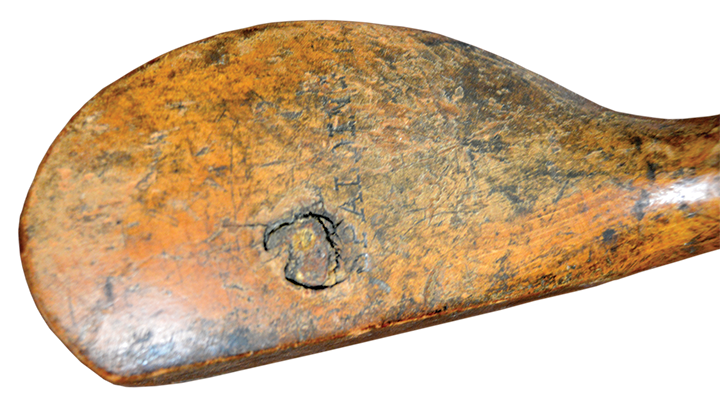Collecting Antique Golf Clubs:
Mass Produced Clubs:
Makers, Cleek Marks, Matched Sets


collecting golf clubs
Earliest Golf Club Makers in the US
It is uncontested that the first manufacturer of golf clubs in the U.S. was A. G. Spalding & Bros. of Chicopee, Mass. And they were among the first to sell golf clubs, although ones made in Scotland… READ MORE
golf club Collecting
James Cran
A Scottish apprentice from Aberdeenshire,
James Cran came to the U.S. in 1896 to work
with Spalding. Was he the first to make an
iron golf club in this country? A deep dive into his history in Part I as well as additions in Part II related to his fellow employees at A.G. Spalding & Co., James Dalgleish and Robert G. McAndrew

Eras of Golf Ball Collecting
Gutta Percha 1848-1902 Era
Discovered by chance as a useful substance for golf balls, gutta percha balls in their early years are highly desired by collectors. The early balls were smooth and flew erratically. Golfers then discovered that the scratches, dents and injuries delivered to these balls actually straightened their flight. Thus began decades of exploration in surface manipulation with grooves, dimples, pimples (called brambles), mesh, and any number of other patterns. Collectors of gutta percha balls rate them according to patterns, age, and, of course, condition. As with featheries, auction prices can be in the many thousands of dollars with prized samples going for quite breathtaking sums. Here, too, is the realm of the expert collector. The casual collector would do well to find second or third rate balls in less desirable condition to at least display for their historical value in the evolution of the ball.


Eras of Golf Ball Collecting
Early rubber Core – 1900-1920 Era
Around the turn of the 20th century, the golf ball took another leap forward with the invention of the wound, rubber core ball. Supplanting the gutty over a period of just a few years, the rubber core, or “bounding billy” as the early ball was known, took off, literally, with golfers who discovered its penchant for to add distance to their games. The early balls varied in size and weight. Core materials varied widely as inventors tried almost everything from a hollow core, to compressed air, honey, steel, a radioactive substance, and, in one bizarre instance, the pizzle (penis) of a bull! Yes, you read that right. Such were the many patterns, weights, cores, that collecting balls from this period involves much research to understand the many patents and varieties. It is a particularly rich period for collectors and balls can be found ranging from reasonable prices to very high for prized and rare patent balls.

Eras of Golf Ball Collecting
Early rubber Core – 1900-1920 Era
Around the turn of the 20th century, the golf ball took another leap forward with the invention of the wound, rubber core ball. Supplanting the gutty over a period of just a few years, the rubber core, or “bounding billy” as the early ball was known, took off, literally, with golfers who discovered its penchant for to add distance to their games. The early balls varied in size and weight. Core materials varied widely as inventors tried almost everything from a hollow core, to compressed air, honey, steel, a radioactive substance, and, in one bizarre instance, the pizzle (penis) of a bull! Yes, you read that right. Such were the many patterns, weights, cores, that collecting balls from this period involves much research to understand the many patents and varieties. It is a particularly rich period for collectors and balls can be found ranging from reasonable prices to very high for prized and rare patent balls.
